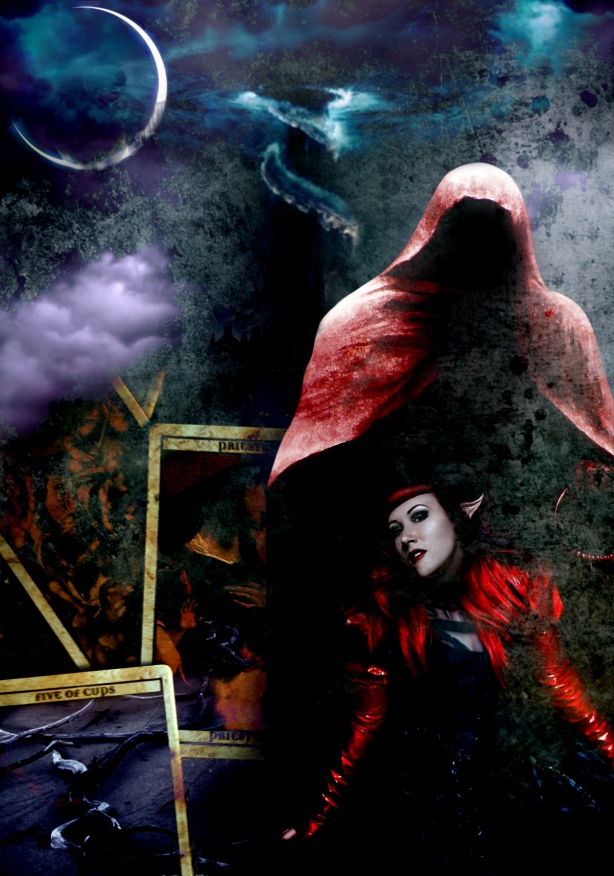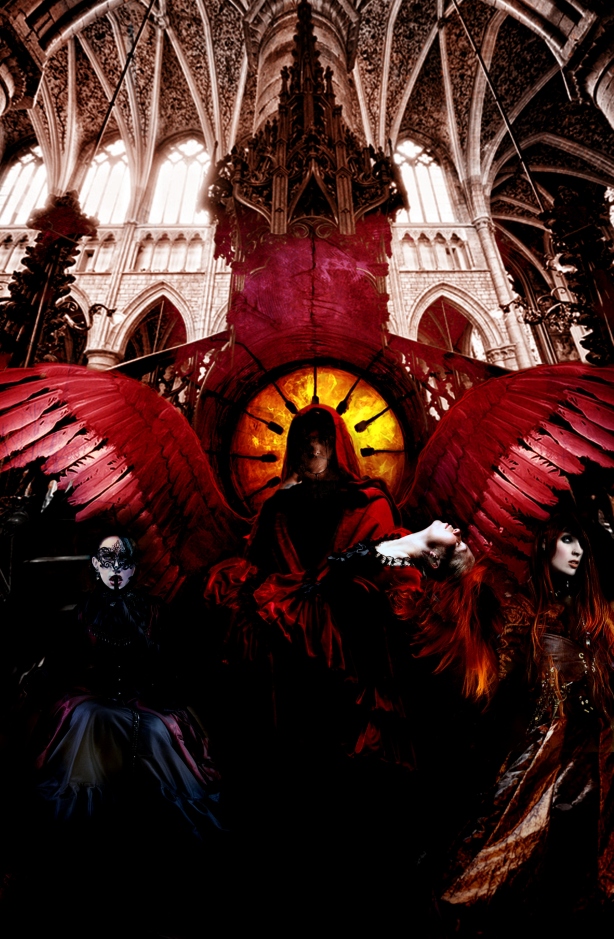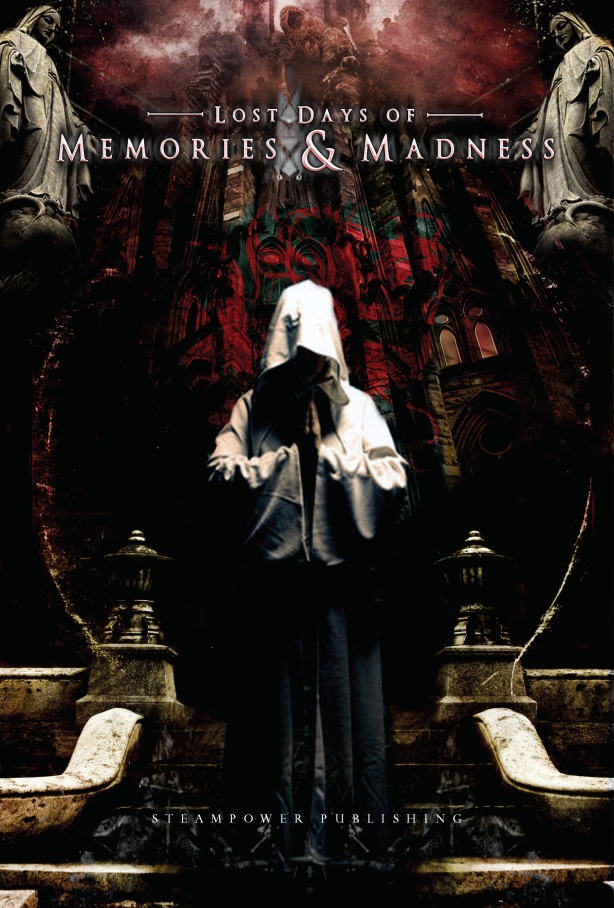I saw this post on Geektyrant the other day and thought it might be of use for anyone trying to survive a game of Dead of Night!
Well spring is firmly in the air and as the weather gets nicer, thoughts are turning to spending more time indoors playing games. I have a hard time just picking up and running a game as written – I much prefer to get under the bonnet and tinker with either the setting or the mechanics. So, these are the top 6 games I want to play, and the hacks I want to play with them.
Not so much a hack as a playset to vaguely recreate the stories of Philip K Dick, with all manner of weird and wonderful results on the situation tables and a tilt table to pull the curtain back for the second act. Why Fiasco? I dunno, there’s something about the way the situation generator that I think will produce great, weird, Dickesque stories.
2. Hot War: Ultraviolet/True Blood
I think Hot War might be the game I own with the most hackability. Its setup lends itself perfectly for tight-knit, character-driven conflicts and monsters. So what better way to represent one of my favourite settings, Ultraviolet, a show all about agents with mixed agendas hunting vampires, perhaps mashed liberally in with True Blood.
3. Empires of Alexander
Anyone who knows me will know I’m a big ancient history buff, especially when it comes to Alexander the Great. I reckon there’d be a lot of fun to be had playing Alexander’s various generals leading their own armies east alongside the Macedonian King, and for me there’s no better game when it comes to military campaigns – Duty & Honour/Beat to Quarters, collectively known as the Empire system. All it’d take would be a reskinning of skills and character creation bits and bobs and you’re ready to ride to the ends of the world!
4. Remember Tomorrow: Revelation Space
I’ve never got into cyberpunk beyond Ghost in the Shell, but love me some hard scifi, especially Alastair Reynolds and his oeuvre. I think the multi-protagonist, split narrative of his books would map brilliantly to Remember Tomorrow’s varied stories told from multiple perspectives. I’ve got a few tweaks to the situation tables to embed the setting in the game more, but RT does the job admirably out of the book.
5. Smallville: the Walking Dead
I’ve got a real yearning to run Smallville but no great desire to play in the published setting. Instead I want to use it to run a game reminiscent of the Walking Dead, as the relationship-focused nature of the game will capture the complicated character situations of the show. In actual fact I’m going to make the setting Unhallowed, but it’s similar enough, just swap zombies for demons.
6. Lost Days of Memories & Madness: Game of Thrones
This hack will almost certainly be the subject of a future post, but with the fantasy epic about go return for a second series I’ve got a hankering to run a high-stakes political game of intrigue, and would use my own Memories & Madness to pull it off. Instead of memories, you’d have subjects or power bases, and coins would become influence or power. Easy. I’ll dig into that one a bit more another time.
How about you? What are you jonesing to a) play and b) hack?
Posted: March 31, 2012 in actual play, design, games, Memories & Madness, storytelling
Tags: actual play, Alastair Reynolds, Fiasco, Game of Thrones, hack, Hot War, Lost Days of Memories & Madness, Philip K Dick, Remember Tomorrow, Revelation Space, Smallville, True Blood, Ultraviolet, Walking Dead
Where are all the sci-fi games?
Posted: March 18, 2012 in design, games, storytellingTags: Alien, Battlestar Galactica, Fiasco, Firefly, Mass Effect, Philip K Dick, Prometheus, sci-fi, science fiction, Star Trek, Star Wars, Traveller
The new Prometheus trailer has got me pondering a question me and my friend Gaz often ask – where are all the sci-fi games? You can’t move for horror or fantasy, but where are all the good science fiction roleplaying games?
Now, before the comments thread gets inundated with angry remarks, let me just say that a) no I don’t mean your game b) yes I’ve considered x or y game and c) I’m actually talking about the wider premise of science fiction, so stand down.
The reason me and Gaz inevitably come to is that the problem lies with the question, namely that the genre of science fiction is too vast to be properly captured in a single game, or even a single genre, really. Let me explain.
Do you want a game to replicate Alien or Event Horizon. That’s surely a horror game. How about Star Trek, Firefly or Mass Effect? Well that’s more of an adventure or space opera game. Star Wars? Heroic fantasy. Aliens? Military science fiction. Battlestar Galactica? Political and social commentary. And when you get into the realms of Iain M Banks, Arthur C Clarke or any Philip K Dick-esque sci-fi you’re looking at corners of the genre more esoteric still.
And how can anyone possibly capture so many diverse genres in a single game?
And that’s before we come to the question of science vs. fiction. Are you looking to tell interesting stories and have the science merely as colour, or is the science the driving factor of the story? How do you keep the science from becoming meaningless fluff or dominating the game with lists of equipment or endless made-up on the fly techno-babble?
So with all those questions in mind, I’ll rephrase my search parameters. I want a game to tell exciting stories set in space, with science as more than just colour but less than endless pages of stats for rayguns. I want the feeling of being out amongst the stars without getting swamped by setting or suffering from a planet a week. I want dead civilisations and the hint of aliens. And I want it to all have a used, worn feel, ashtrays in space as Gaz would put it.
In short I want Prometheus: the game please. Don’t make me write it myself.
And I was joking in my preface. I’m looking forward to all the comments on why I’m wrong, right or where I can find the games me and Gaz have missed all along.
*One day I will write a sci-fi Fiasco playset called Dick Head. Wait till you see the tilt table.
Christmas Ghost Stories
Posted: December 23, 2011 in Dead of Night, gamesTags: Christmas, Dead of Night, dead of night rpg, ghost story, horror movie, MR James, Susan Hill, Victorian, Woman in Black
 Here in England we have a tradition that at Christmas, ghost stories are told and read. I think it dates from the Victorian era, for the Victorians liked a good ghost story, and made the transition to the television in the 70s with an excellent series of ghost stories by the BBC (including Charles Dickens’ The Signalman, pictured). M0re recently, BBC4 has revived the tradition with a mix of fresh adaptations (such as Whistle and I’ll Come to You) and new stories (Mark Gatiss‘ excellent Crooked House).
Here in England we have a tradition that at Christmas, ghost stories are told and read. I think it dates from the Victorian era, for the Victorians liked a good ghost story, and made the transition to the television in the 70s with an excellent series of ghost stories by the BBC (including Charles Dickens’ The Signalman, pictured). M0re recently, BBC4 has revived the tradition with a mix of fresh adaptations (such as Whistle and I’ll Come to You) and new stories (Mark Gatiss‘ excellent Crooked House).
I’m also partial to a ghost story or two, and as my friend Mark leant me an audio book featuring a variety of ghost stories I’ve been scaring myself into the Christmas spirit every night on the way home. So, what better way to mark the yuletide than with a post about running a traditional Victorian ghost story using Dead of Night?
Writing Scenarios
Posted: December 13, 2011 in conventions, Dead of Night, gamesTags: Dead of Night, evilgaz, Hot War, prep, Smart Party
Just a quick one today and it’s a link to my friend Gaz’s post about writing scenarios – notionally for Hot War, but many of the techniques he describes for setting up complicated relationships would work wonderfully for other games, including Dead of Night. I used something similar with both Bad Signal and Grendel, AP, although with the latter it was the players who complicated the relationships.
Art Preview: Conflict & Madness
Posted: December 10, 2011 in artwork, games, Memories & Madness, storytellingTags: conflict, elves, George Cotronis, Lost Days of Memories & Madness, madness, mechanics
Here’s another of George’s stunning interiors for Lost Days of Memories & Madness to keep you busy whilst I talk about the mechanics at the centre of the game: memories, conflict and madness.
We talked about memories last time, so this time I’ll talk about how they fit in with the mechanics of the game when the dice hit the table. Remember in my last post I talked about bidding for memories, and how the amount bid for a memory was its value? Well, in a conflict, you get to roll a number of dice equal to the value of any related or relevant memories, so the more powerful a memory, the more potent it is when you draw upon it in a conflict.
Art Preview: the Value of Memories
Posted: December 2, 2011 in artwork, games, Memories & Madness, storytellingTags: elves, George Cotronis, Lost Days of Memories & Madness, Melnibonean, memory
I thought I’d post up another of the stunning interiors for Lost Days of Memories & Madness by George Cotronis today and talk a little about another aspect of the game, this time the memories that make up the core of play. Once again it’s such a shame not to show the art off in colour, even though it’s in black and white in the book.
As I described last time, at the heart of elven culture are their memories, some of which are their own, some of which are stolen, traded or otherwise acquired from others. These memories make up the core of the game as well, defining your character and what he can do in a conflict in much the same way as a skill, trait or aspect might in other games. The difference is, memories are written on index cards and over the course of the game can be traded, stolen or lost, so not only do the elves change what they can and can’t do, they also change what they know and who they think they are.
Art Preview: The Elves of the Eternal Court
Posted: November 28, 2011 in artwork, design, games, Memories & Madness, publishing, storytellingTags: background, elves, George Cotronis, Lost Days of Memories & Madness, Melnibonean
Yesterday I showed off the cover for Lost Days of Memories & Madness, my game of intrigue and insanity at the court of the elves. Today I thought I’d post up another piece of art and talk a little about the background for the game, as this piece forms the opener for Chapter 1: The Elves of the Eternal Court.
I’ve posted it up in full colour because I wanted to share George’s awesomeness, but the book is in black and white. You can see for yourself now – I’ve put the PDF up on RPGNow for sale.
Art Preview: Lost Days of Memories & Madness cover
Posted: November 27, 2011 in design, games, Memories & MadnessTags: George Cotronis, Lost Days of Memories & Madness, paul bourne
I got some copies of my latest game, Lost Days of Memories & Madness, to sell at Dragonmeet at the weekend and realised I’d barely posted about it here! So, with the game going on sale in the next week, I aim to put that straight!
First up, here is a look at the awesome cover – the picture is by George Cotronis, whilst the design is Paul Bourne, and combined they make for a very striking piece of art.
The interior art is all in the same vivid style, and Paul has used each of the pieces as chapter heads. I’ll post them up over the course of the week too.
Dead of Night: Salford’s Lot part 2
Posted: October 31, 2011 in actual play, conventions, Dead of Night, gamesTags: actual play, dead of night rpg, Furnace, horror movie, the Covenant, the Craft, witch
I posted part 1 of my actual play in the last post. I set the scene before character creation – two nights ago your teenage coven summoned something it could not put down; last night Salford was swept by a wave of rioting and looting; tonight two of the coven haven’t shown up – so we kicked into the game straight away. The coven scrabbled around Simon’s flat, determining that yes, the grimoire was indeed gone, before breaking into his bedroom where they found it crawling with cockroaches and a strange, sentient blood-like ooze that Ann-Marie insisted on taking a sample of.
They then fled the flat, where they ran into a group of rioters including the now-infamous Billy Hunt, who tried to bully Alan into holding the big tv he’d just nicked. This scene was great, as it set up Billy as a hard case, as well as putting Alan’s own bluster and bullish manner into perspective (Billy bullies Alan, so Alan bullies Ollie). Cops arrive, coven flees, only to find Simon’s body crucified in an alley, his phone filled with frantic voice mail messages from Julianne telling Simon she’s hiding out in the derelict flats.It’s about this time they first notice the car with blacked out windows and an Italian number plate following them.



